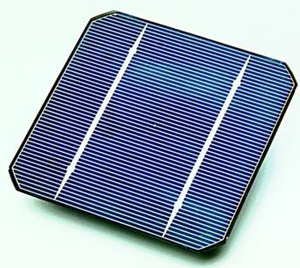
- Image via Wikipedia
Researchers from University of Minnesota have removed a barrier to improving solar cell efficiency by showing how heat energy currently lost from semiconductors can be captured and transferred to electric circuits. They hope manufacturers will use the results to produce solar cells with twice the output of current solar cells and at a lower cost.
In current solar cells, the topmost layer is made from a crystalline semiconductor, usually silicon, which absorbs excess solar energy in the form of “hot” electrons, and radiates the energy away before it can be harnessed. Up till now, capturing this heat into an electric circuit before it cools has not been possible, however the team constructed semiconductors of lead selenide only a few nanometers wide called “quantum dots”, and transferred the heat into wires of titanium dioxide successfully before the hot electrons cooled.
The next step will be to build and improve solar cells with quantum dots, but a further obstacle will need to be addressed; there is still heat loss from titanium dioxide. Up until now solar cell heat research has focused on heat exchangers that harness heat energy for building heating and cooling, rather than for solar power itself, or on heat-absorbing solar glazing; but now the potential is there for building solar cells with efficiencies approaching 66% compared to current efficiencies which rarely exceed 30%. The researchers are confident that their research has paved the way for high-efficiency, low-cost solar cells.
Related articles by Zemanta
- RAPatton: Hot electrons could double solar cell efficiency – tech – 24 June 2010 – New Scientist (newscientist.com)
- Quantum dots for highly efficient solar cells (nanotechweb.org)
- Charge of the light brigade: How quantum dots may improve solar cells (scientificamerican.com)








